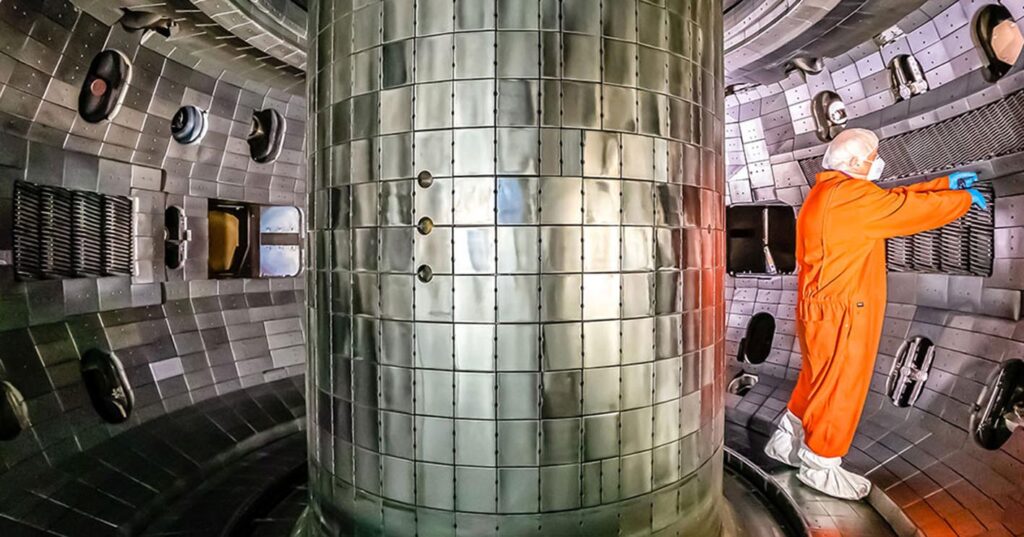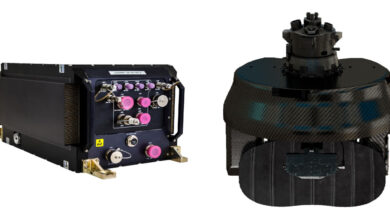DIII-D National Fusion Facility Completes Record-Breaking 1,600-Hour Research Campaign
- Two-year campaign produces 140 studies and 1,600 plasma research hours; pioneers new technologies and approaches for delivering cost-effective fusion energy
San Diego, June 30. The DIII-D National Fusion Facility completed its current two-year research campaign yesterday evening, closing out a series of experiments that pioneered many transformational advances for fusion energy. The campaign included a record-breaking 1,600 hours of plasma research as part of 140 ground-breaking studies.

As research operations conclude, the facility will begin a slate of major upgrades over the next eight months to prepare for the next phase of research. These upgrades are part of a series of scheduled and planned improvements to DIII-D that will keep it at the forefront of fusion science and a valuable resource for the entire fusion community.
“The 2023 research campaign was one for the history books. I can’t remember a more productive effort, which is really a testament to the hard work of our wonderful team of scientists and engineers from across the country,” said Dr. Richard Buttery, Director of the DIII-D National Fusion Facility.“But it’s never a quiet time at DIII-D. We’re already getting started on an important set of upgrades as we look ahead to the next campaign.”
DIII-D is the largest and most heavily utilized magnetic fusion machine in the United States. It supports more than 650 scientists from 95 institutions across the United States and the international research community.
Record-breaking Run Time
The record-breaking campaign saw the facility in operations for over 200 days. The most notable advances of the campaign included:
- The demonstration of high performance “diverted negative triangularity” plasma configurations, which alter the shape of the plasma to improve performance and heat dissipation and potentially revolutionize the path to cost-effective fusion energy.
- The deployment of a new radio-frequency wave injection technology known as “helicon current drive” with an innovative antenna that improves the delivery of energy to the plasma, potentially creating a new method for efficiently sustaining plasmas in a more compact and cost-effective manner.
- Significant optimizations to DIII-D’s flexible three-dimensional magnetic field configurations, which improved particle confinement and protections for the plasma-facing walls of the machine.
As part of DIII-D’s commitment to developing the next generation of fusion scientists, the program for the first time reserved two weeks of run time for student researchers. In total, 17 experiments were conducted by students pursuing PhD theses. DIII-D hosts over 200 students, interns, and postdoctoral research fellows annually.
“Receiving run time on DIII-D was an incredible opportunity. Although it’s very competitive, the research team is very supportive, and the research environment is collaborative. With the guidance of a cadre of scientists and engineers, I was able to use DIII-D to test new ideas that build on lessons learned from previous students and colleagues’ research, hopefully bringing fusion energy a tiny bit closer to reality. This type of experience is instrumental to training the next generation of fusioneers, and one that I am extremely grateful for,” said Kyle Callahan, a PhD student at the University of California, Los Angeles.
Many additional advances were made in the understanding of fusion plasmas, including improvements to efficiency, performance, and control. Findings from these and other areas of research will be announced in upcoming scientific journals and conferences.
Significant Upgrades
DIII-D has already begun a new upgrade effort to prepare for next year’s research operations. The upgrades will dramatically improve DIII-D’s capabilities for shaping and containing plasma to increase plasma volume and current. These changes will allow DIII-D to reach higher performance levels relevant to fusion power plants and enable new research to improve plasma control and efficiency.
As part of the upgrade effort, researchers will install a new divertor system, which is used to channel excess heat away from the edge of the plasma. The divertor is a permanently installed component in DIII-D that is critical for maintaining efficient plasma operations. Optimizing the divertor to efficiently disperse heat without impacting the performance of the plasma is an important research goal for the DIII-D program.
“DIII-D has utilized different divertor structures in the past to help build the physics basis for handling power in fusion reactors. The upcoming staged divertor program accelerates this approach, tackling three separate divertors in the next five years. Each stage of research will answer a key question and take us to the next phase of research. When complete, this upgrade will help influence the design of future power plants,” said Morgan Shafer, Head of DIII-D’s Edge & Boundary Physics Group (Oak Ridge National Laboratory).
Another significant upgrade will be the installation of a new “Lower Hybrid” current drive system as part of a pioneering advancement in fusion power plant technology. A first-of-its kind technology demonstration co-led by the Massachusetts Institute of Technology’s Plasma Science and Fusion Center (MIT PSFC) and General Atomics (GA), the Lower Hybrid system will give DIII-D additional capabilities to produce reactor-relevant plasma profiles. This approach is theorized to offer the most efficient mechanisms for increasing current drive.
“The new lower hybrid system will improve DIII-D’s current drive capacity and efficiency, which will enable researchers to achieve plasma scenarios that are relevant to steady-state reactor operations. This system will be a first-of-a-kind test of novel physics, as well as an important technological advancement demonstrating additive manufacturing of in-vessel components as a new approach for deploying fusion heating and current drive. DIII-D is already a high-performing and versatile machine, and this upgrade is going bring us into a new paradigm of current drive capabilities,” said Dr. Theresa Wilks, Lead Scientific Coordinator for DIII-D Collaboration at MIT PSFC.
The Lower Hybrid system will be installed using robotics developed as part of the DIII-D program. The robot will use advanced software, sensors, and cameras to conduct precision welding inside the tokamak. Advanced robotics systems will be an important tool for performing maintenance in future fusion power plants when it is not safe to enter the fusion reactor.





